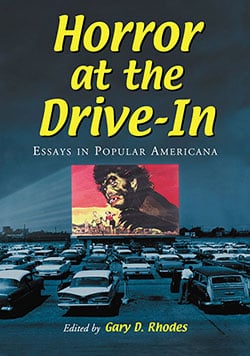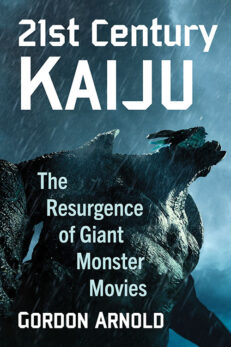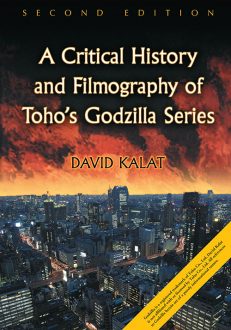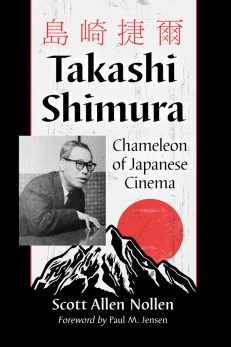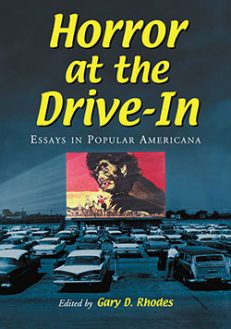Horror at the Drive-In
Essays in Popular Americana
$39.95
In stock
About the Book
Drive-in movie theaters and the horror films shown at them during the 1950s, 60s, and early 70s may be somewhat outdated, but they continue to enthrall movie buffs today. More than just fodder for the satirical cannons of Joe Bob Briggs and Mystery Science Theatre 3000, they appeal to knowledgeable fans and film scholars who understand their influence on American popular culture.
This book is a collection of eighteen essays by various scholars on the classic drive-in horror film experience. Those in Section One emphasize the roles of the drive-in theater in the United States—and its cultural cousin, Australia. Section Two examines how horror operated at the drive-in, the rhetoric used in coming attraction trailers, horror film premieres at drive-ins, double features, and the preproduction, production, and marketing of Last House on the Left. Section Three addresses the effects of the Vietnam War and counter-culture on The Texas Chainsaw Massacre, and the Cold War on Cat Women of the Moon.
Section Four explores gender issues and sexuality, two of the most common and most important subjects of horror film analysis. Section Five covers drive-in culture via Hush…Hush, Sweet Charlotte, 2000 Maniacs, and the films of Mario Bava. Section Six investigates a variety of issues, such as the drive-in horror film’s embrace of DNA, the use of cinematic form to create a non–Hollywood look in Wizard of Gore, and the many different prints and running times of I Drink Your Blood.
About the Author(s)
Bibliographic Details
Edited by Gary D. Rhodes
Format: softcover (7 x 10)
Pages: 312
Bibliographic Info: 77 photos, notes, index
Copyright Date: 2008 [2003]
pISBN: 978-0-7864-3762-7
eISBN: 978-1-4766-1051-1
Imprint: McFarland
Table of Contents
Introduction 1
DRIVING IN
1 Who’s Afraid of the Virgin Wolf Man? Or, the Other Meaning of Auto-Eroticism 9
2 Drive-In Horror Across the Outback: Surf, Sand and Sisters 25
SITUATING THE HORROR
3 Naked! Screaming! Terror! The Rhetoric of Hype and Drive-In Movie Trailers 41
4 A Drive-In Horror by Default, or, The Premiere of The Hideous Sun Demon 53
5 Ideology and Style in the Double Feature I Married a Monster from Outer Space and Curse of the Demon 67
6 The Legacy of Last House on the Left 79
BOILING HOT AND COLD: THE PRESSURES OFWAR
7 Apocalypse Here and Now: Making Sense of The Texas Chain Saw Massacre 97
8 In the Science Fiction Name of National Security: Cat Women of the Moon 113
INTERPRETING GENDER AND SEXUALIZED IDENTITIES
9 “Horror Has Its Ultimate, and I Am That”: Severing the Bonds of Identity in The Head and The Brain That Wouldn’t Die 129
10 Ed Wood, Glen or Glenda and the Limits of Foucauldian Discourse 141
11 Daughter of Horror: Low-Budget Filmmaking, Generic Instability and Sexual Politics 155
12 Evil, Beautiful, Deadly: Publicity Posters of Drive-In Horror’s Monstrous Women! 169
13 Unmasking Patriarchy’s Savior: Gender Politics in Samson versus the Vampire Women 187
UNDERSTANDING CULTURAL CURRENTS
14 Monsters and Mayhem Below the Mason-Dixon 201
15 Italian Cinema Goes to the Drive-In: The Intercultural Horrors of Mario Bava 211
EXAMINING TECHNOLOGY IN, BEHIND AND BEYOND THE DRIVE-IN
16 The Threat of Materialism in the Age of Genetics: DNA at the Drive-In 241
17 Wizards of Gore, Dances of Life and Hidden Dimensions 259
18 Drinking Blood with Walter Benjamin and David Durston 277
About the Contributors 297
Index 301
Book Reviews & Awards
“all eighteen essays are well written, and worth your time”—Classic Images; “essays approach a number of unusual but provocative themes”—Big Reel; “a major contribution”—Journal of Popular Film & Television; “prepare to be wowed”—Brutarian Quarterly; “essays…on the classic drive-in horror experience”—Cult Movies; “fine collection…deserves a wide readership…well researched and highly readable… a good textbook”—Hubstuff; “a valued resource”—The Ninth Circle; “the illos are excellent”—Psychotronic; “important…impressive—Journal of Popular Culture; “a fine collection…well researched…would certainly be a good textbook for film classes, sociology classes, or even history classes…. Recommended”—Journal of American Culture.

